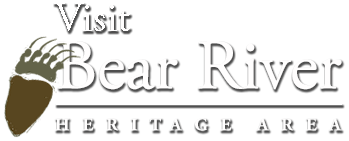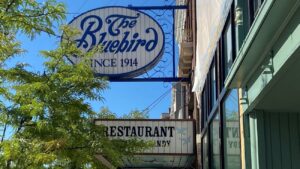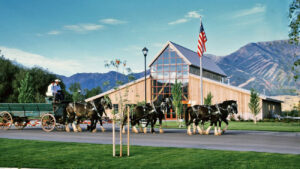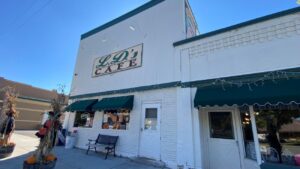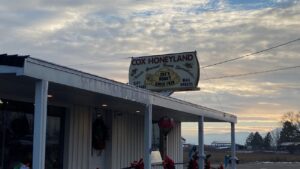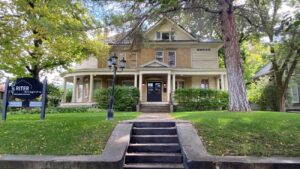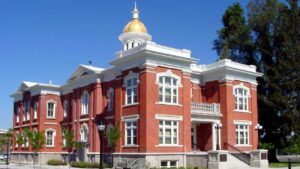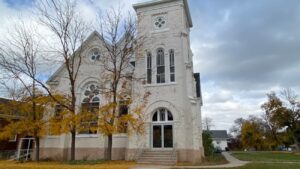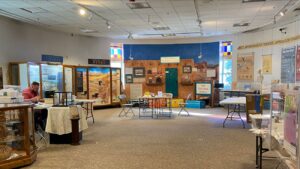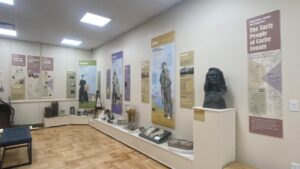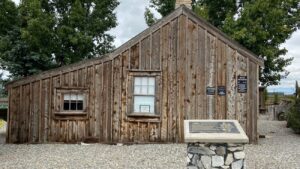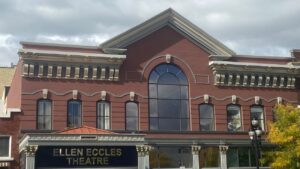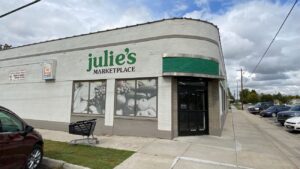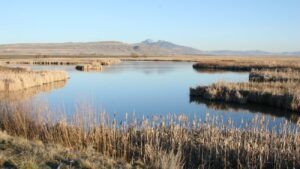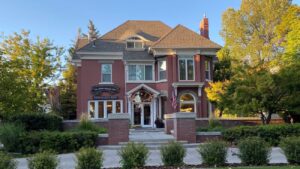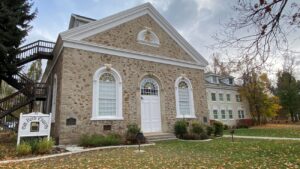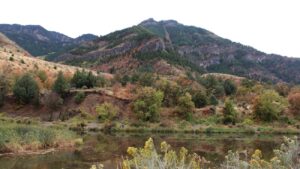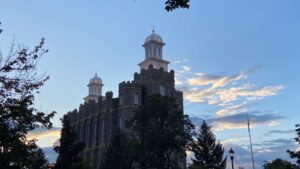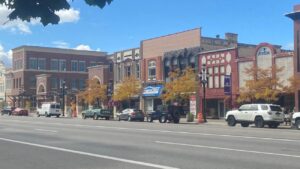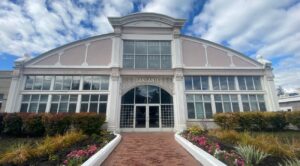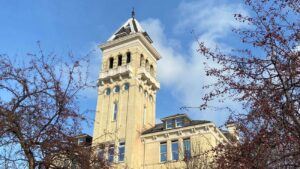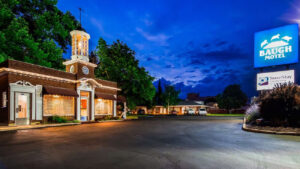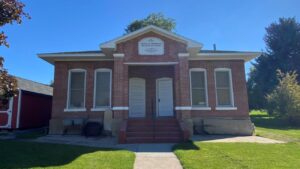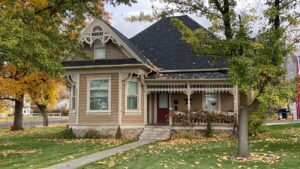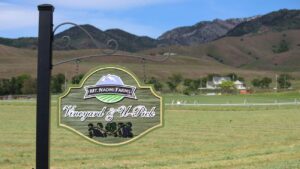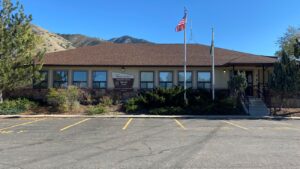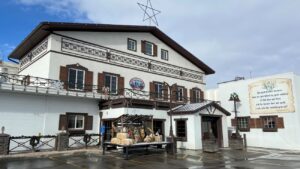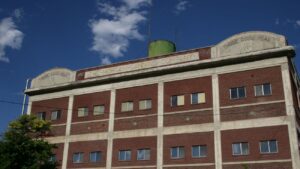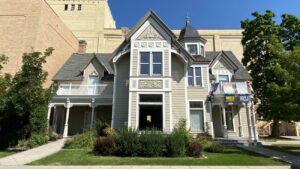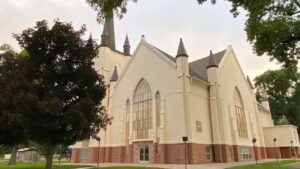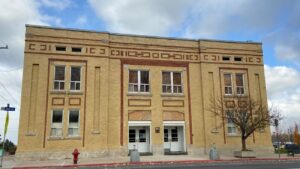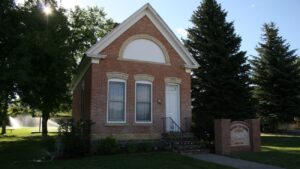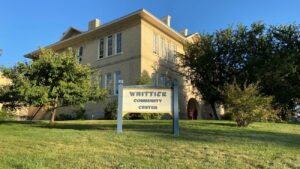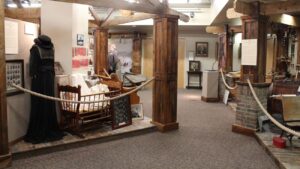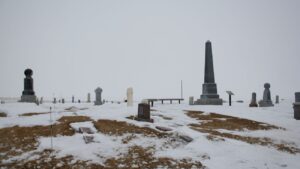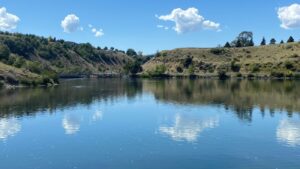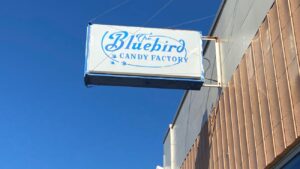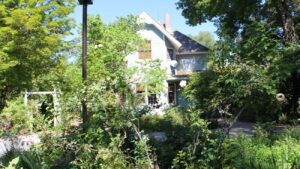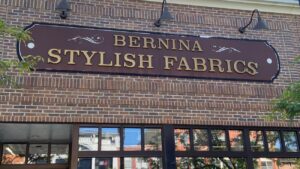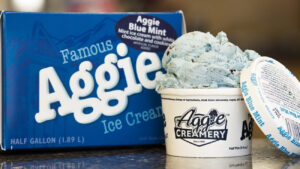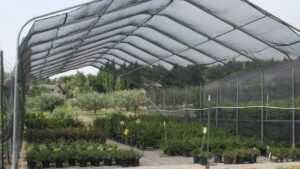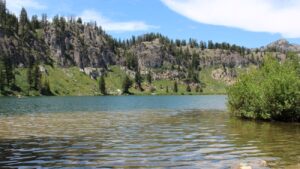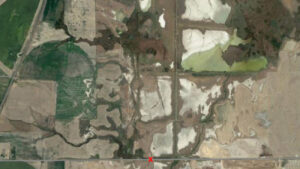
Cache Valley Utah
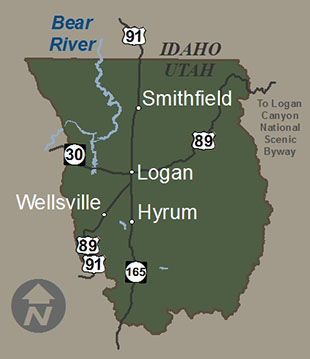
Cache Valley Utah includes the major city of Logan as well as towns like Smithfield, Hyrum, Wellsville, Mendon, and others. Cache Valley was originally named Willow Valley or Seuhubeogoi by the Shoshoni because of the abundant willows growing along its many rivers and streams. Later, the name was changed to Cache Valley for the practice of early fur trappers to cache, or hide, their furs in the area.
The valley is about 50 miles long, 20 miles wide, surrounded by rugged mountains, and straddles the Utah-Idaho border. It is a green oasis in the arid west, and even greener because of the irrigation system that was established by early settlers.
It was originally only known to Native Americans (primarily Shoshone and Ute), then trappers. Soon after the Mormons settled in the Salt Lake Valley in 1847, they began colonizing nearby areas.
In 1855, cattlemen tending Brigham Young’s and other’s herds attempted a large settlement they called Elkhorn Ranch, in the present Nibley area. Unprepared for a severe winter, most of their cattle died and the ranch was all but abandoned for a few more years. A year later in 1856, Cache Valley’s first permanent settlement was established in Wellsville.
Explore Cache Valley Utah
Attractions
In business since 1914, this historic café has seen much business done over a cup of coffee and a handshake. Stop in for a cool drink at the old soda fountain. A mural in the back room depicts local history and predictions for Logan’s future. Temporarily closed for renovation.
View moreDiscover what western life was like from 1820 to 1920 at this 160-acre living history center. Learn to spin wool, weave rugs, milk a cow or just enjoy the fresh mountain air and beautiful scenery on a wagon ride around the site. The center offers hands-on learning as you visit…
View moreL. D. Bowcutt started L.D.'s Cafe 45 years ago. Serving breakfast, lunch and dinner, L.D.'s is a favorite of many valley residents. Weekends are popular at L.D.'s with their steak and shrimp dinners. Stop by on St. Patrick's Day and try the traditional Corned Beef and Cabbage dinner and green…
View moreThis business has been owned by the same family since it was founded in 1929. The intermountain area, with its dry climate, is considered one of the best areas for production of low-moisture honey that stores well. A glass observation hive on the premises allows visitors to watch the bees…
View moreThe Riter Mansion is a beautifully-appointed luxury inn and conference center. The stately Greek Revival/Georgian manor home with its beautiful columned porch was built at the turn of the last century by a prominent pharmacist named Riter. The estate was often used as a social gathering place and a center…
View moreThis building was built in 1883, designed by Truman O. Angell, Jr., who also designed the Logan Tabernacle and the Logan Temple. It is the oldest county building in Utah still being used for its original purpose.
View moreBuilt from 1903 to 1905, the historic Old Hyrum First Ward Meetinghouse is a striking example of late Gothic Revival Style, and remains a prominent feature of the Hyrum landscape. Listed on the National Register of Historic Places, this building represents the local community in its materials and work ethic.
View moreThis teaching museum houses exhibits on the early inhabitants of the Great Basin and other regions of the world. Admission is free, and docent guidance or self-guided exploration is available.
View moreView mountain man and early pioneer relics and enjoy reading historical accounts of Cache Valley natives. Open June to September (Labor Day) or other times of the year by appointment
View moreIn Lewiston, Utah, there is the historic Wheeler Cabin run by the Daughters of Utah Pioneers. To tour the cabin, you can call the phone numbers listed.
View moreThis historic theater was built in 1913 by the Thatchers, a prominent family who loved plays and operas. A wing was added onto the theatre in 2001 and the building was beautifully refurbished. The theatre is home to a summer repertory season and other performances during the year. The beautiful building…
View moreFamily-owned since 1904, this store was known as Theurer’s (pronounced “Tire’s”). It is now named Julie's Marketplace. They sell groceries, hardware items, and they also have a custom butcher shop. It is a local favorite for residents of Cache Valley.
View moreCutler Marsh was created by the shallow water of the Bear River at the head of the Cutler Reservoir. It is best viewed from the bridges where roads cross the marsh, and the boat docks (restroom here), or by canoe. Expect many waterfowl and shorebirds. A 2.5 mile loop trail…
View moreFind out about your family history at this fascinating center, which has computers that tie into the famous genealogy library located in Salt Lake City. Just type in your name, and find a long-lost relative! You can also reserve a time to digitize materials such as VHS and cassette tapes….
View moreLocated in the historic Cache County Courthouse, the Visitors Bureau and Gift Shop is the perfect place to discover local events, products, and sights. They host a range of products from sweatshirts to books to games as well as brochures for every historical site and spot of interest in and…
View moreNestled in a shaded and quiet court and within walking distance of Logan's historic tabernacle and LDS Temple, Logan Anniversary Inn provides uniquely decorated rooms and quality lodging in its historic buildings.
View moreThis old Mormon meetinghouse is built of local stone and nestled in the pleasant community of Providence, just south of Logan. Built in 1871, the Old Rock Church is listed on the National Register of Historic Places, and is affectionately known as the Old Rock Church. An addition to the Old Rock Church,…
View moreWhether you travel by foot, bicycle or car, a journey along the Logan Canyon Scenic Byway offers enough wild natural beauty, diverse recreational opportunities and fascinating stories to satisfy even the most demanding adventurer. Located approximately ninety miles north of Salt Lake City, this winding stretch of U.S. 89 runs…
View moreThe Church of Jesus Christ of Latter-day Saints Temple is an easily visible icon of the Cache Valley landscape. The edifice was designed by Mormon architect Truman O. Angell, and built from 1877-1884 by the donated labor of early pioneers. The modified Gothic building rests on a terrace of the ancient Lake Bonneville, and…
View moreMany beautiful turn-of-the-century homes and buildings are located in Logan. You won’t want to miss the Bluebird Café, the Logan Tabernacle, or the Episcopal Church. A 45-minute downtown walking tour guide can be picked up at tourist information center located in the Historic County Courthouse. The Logan Center Street Historic…
View moreBuilt in 1900, the Dansante Building has played a central role in the social life of the Cache Valley community for a century. For decades it served as the valley’s premier dance hall, hosting as many as 3,000 people on major holidays. It later became a clothing factory for two…
View moreRiverside Nature Trail is one of the best birding spots in Logan Canyon. Look for Fox Sparrow, Orange-crowned Warbler, Hermit and Swainson's Thrush, Gray Catbird, Lazuli Bunting, Lincoln's Sparrow, Warbling Vireo, and Cordileran Flycatcher. Near Spring Hollow Campground is a small reservoir good for viewing Barrow's and Common Goldeneye during winter….
View moreUtah State University was founded as a land grant agricultural college in 1888 and has developed into a major research university, especially in agriculture, natural resources, and space dynamics. The campus is filled with historic buildings and attractive landscaping. The oldest building on campus is Old Main, on the western…
View moreFamily owned and operated, the Baugh Motel was built in 1957 on the site of an old trolley car depot and is reminiscent of 1950's brick roadside architecture. The registration office in an old gas station. The rock-walled ruins of a flour mill can be seen on the northwest corner…
View moreThe James and Drusilla Hendrick's Camp Relic Hall is run by the Daughters of Utah Pioneers. Early Mormon, Native American, and other local history artifacts are preserved in this museum. Originally built for a Latter-day Saint Stake President as an office, the building is now owned by the city. The…
View morePrintable walking tour of historic sites and buildings in the city of Providence, Utah. Download their walking tour brochure.
View moreBirding is good all the way up High Creek to the trailhead at the roads end. Look for Winter Wren (June), American Dipper, Plumbeous Vireo, and Western Tanger. The scenery is also outstanding. Several trails depart from the trailhead and provide access the high mountain habitats within Mount Naomi Wilderness….
View moreCome pick your own fruit according to your discerning taste. Indulge your senses with decadent blackberries, raspberries, grapes, peaches and apples. Mt. Naomi Farms in Hyde Park is established on land that belonged to the Meikle family as far back as 65 years ago. Historically a dairy, the farm is…
View moreRanger districts typically manage recreation facilities and activities, handle special permits, and sponsor interpretive education programs. Stop by the Logan Ranger District and Visitor Center to load up on maps, get acquainted with recreation opportunities, check on current conditions, and learn more about how to keep the forest healthy. The…
View moreThis family-owned company was founded in 1966 by Edwin Gossner, a cheesemaker from Switzerland who came to Cache Valley to start a cheese business because he felt the conditions here were ideal, similar to those in Switzerland. The company specializes in several varieties of cheese, plus shelf-stable milk-a form of…
View moreThe Tabernacle was completed in 1891 and is a striking example of an early Mormon pioneer public meetinghouse. A beautiful pipe organ was installed in 1908 and the building is used for Church conferences, community concerts, and other presentations. An extensive genealogy library is located in the basement of the…
View moreIn 1920 the Morgan Pea Factory, located on the west side of Main Street in Smithfield, began business. It was later bought by Del Monte Foods and has since been turned into a can-making factory. Look for the brick building with the original name built into the masonry.
View moreThe Thatcher-Young Mansion was built in 1878 by G.W. Thatcher and his wife Mary Ann Angell-Young. The designer of the home is believed to be Mary Ann’s cousin, Truman Angell Jr., who designed the LDS tabernacles in Brigham City and Coalville, Utah, and in Paris, Idaho, as well as the…
View moreThis tabernacle was once used as a meeting house by early members of the Church of Jesus Christ of Latter-day Saints (Mormons). It was built in 1908 and reflects Mormon architecture at the beginning of the twentieth century. Its Gothic English architecture and chapel with balcony, wooden benches and slanting…
View moreListed on the National Register of Historic Places, the Elite Hall in Hyrum, Utah, is a historic dance hall built to host a variety of community events. Although it was built in 1915 and is still in the process of restoration, the hall hosts a variety of events, from swing…
View moreArtifacts from the early history of Paradise and southern Cache Valley are preserved in this museum which is housed in the old Mormon tithing office.
View moreThe Whittier School was built in 1908 and holds school day memories for many locals. It was purchased from Logan School district in 1992 and has undergone various rehabilitative projects. Each year, another goal is met in keeping up with building standards to make sure that the Whittier School is…
View moreThe Hyrum City museum is in the beautiful new Hyrum City Library/Museum complex. The building was completed in May of 2007. Learn about the history of the Hyrum Utah area. Call for more information or to arrange a visit.
View moreThis changing gallery features the work of student artists. Twain Tippetts was invited to join the faculty at Utah State University in 1956 as head of the Fine Arts Department that included the academic units of visual art, theater and music. Through the years he headed the university's cultural arts…
View moreMartin Harris is an important figure in the history and heritage of the Church of Jesus Christ of Latter-day Saints (also known as LDS or Mormon). Martin Harris was one of the three witnesses of the Book of Mormon, meaning he swore to seeing the gold plates from which the…
View moreThis grassy park marks the first of three dams constructed to harness the power of Logan River for electricity. On a sunny, spring day, the banks of First Dam come alive with picnickers, volleyball, sunbathers and college students. Hopefully geese and ducks are always looking for a tasty crumb. Local…
View moreThis rich hand-dipped chocolate candy shouldn’t be missed! The company has been in business since 1914. A second location is in the Albertsons shopping center at 49 East 400 North, just north of Juniper Take-out and east of Zion's bank.
View moreDragongoose Farm is an interesting site, featuring an historic home and granary built in 1875. Settler Niels Bergeson planted a box elder tree around 1874 that is listed as a Utah Champion Box Elder. Part of the historic home was used as the Bergeson Maternity Home from 1939-1949. When you…
View moreStylish Fabrics opened in the 1960s, supplying patterns and fabric for clothing. Today, the shop specializes in fabric and batting for quilt making, a well-developed local craft. Their inventory is so complete and high quality that they have many out-of-state customers who send for materials here. Stylish Fabrics also sells…
View moreUtah State University, the state’s agricultural college, has played an important role in pioneering the production of dairy products since 1888, when the first creamery was located in the Old Main building. Throughout the years, their locally famous ice cream confection has been available on campus in an assortment of flavors. The current location, established in 1975, continues to offer the traditional dairy treat, as well as Aggie made cheeses.
View moreThis Utah Century Farm, established in 1904 by William Zollinger, a Swiss-German immigrant to Cache Valley, was always known as a fruit farm throughout the years. William Zollinger established one of the first apple orchards in Cache Valley. When grandson Ron Zollinger took over the the management of the family…
View moreKnown as the crown jewel of the Bear River Range, this glacial lake greets visitors with an explosion of summer wildflowers and lush green plants. Tony Grove was formed by powerful and slow-moving glaciers, as evidenced by the huge boulders deposited around the lake. Moose are often spotted taking advantage…
View moreLocated in Logan Canyon, Ricks Spring is a karst spring, meaning it is a natural water outflow from a cave. This spring features informational signs that describe its history as well as a warning not to drink the water. You can explore a smaller cave off to the side, or…
View moreThe Amalga Barrens is a salt playa wetlands habitat several square miles in area with little human activity. Expect to see marsh birds, birds of prey, and many shorebirds. This site is on private lands, so please stay on the road to view wildlife. It's located in the center of…
View moreIn the town that celebrates Black and White Days (named after black and white Holstein cattle) to honor dairy farming in Cache Valley, Casper’s Malt Shop makes delicious dairy treats, including Casper’s famous Fat Boy ice cream sandwiches and Casco ice cream sundaes on a stick. The production plant location…
View moreCache Visitors Bureau
199 North Main, Logan, Utah 84321
1-800-882-4433
Cache Chamber of Commerce
160 North Main, Logan, Utah 84321
435-752-2161
Bear River Heritage Area
170 North Main, Logan, Utah 84321
208-243-2227
